Arhivi avtorja: Erasmus Erasmus
Erasmus+ Open Day
At the end of June in 2023, we presented the project achievements to students parents, and the general public. Bookmarks, that were made by our students during the Erasmus+ project, were given as a gift to all visitors.

Mobility to Greece 22nd – 26th May 2023
The last mobility of our project is behind us. This time we explored Greece. Our hosts from the primary school 4o Dimotiko Schoolio from Edessa made sure that we felt comfortable and very welcome throughout the whole mobility.
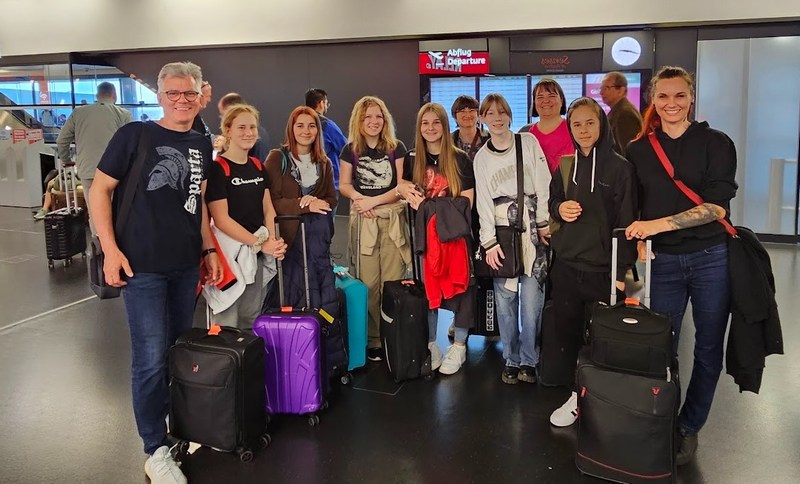
This time the teachers of the Slovenian Erasmus+ team invited the girls from 7th grade to the mobility, who have taken great care of our project from the very beginning. They were happy to do the tasks and had great ideas on how to improve the final product.
Our departure day was on May 21st, 2023 and we flew from Vienna in Austria to Thessaloniki, Greece.

The first night was spent there, so we had the opportunity to see the second-largest Greek city, which has around one million inhabitants. On Monday, we met with teachers Maria and Sotiris, who are the coordinators of the Erasmus+ project “Our Cultures – Our Treasures” in Greece. They took us around Thessaloniki and taught us about the history of this city.
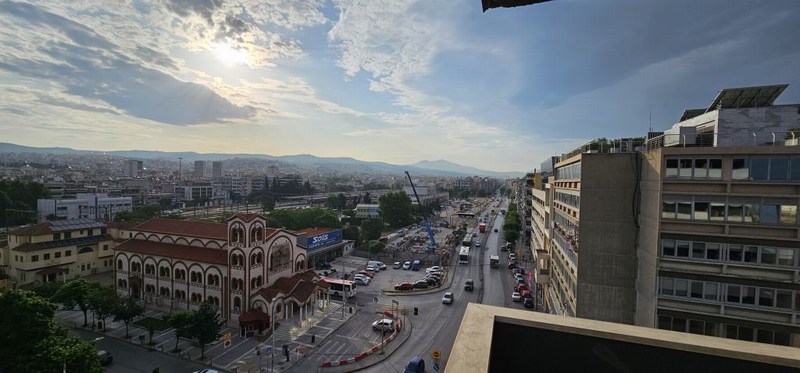
We visited the White Tower museum and saw a lot of objects from the ancient period. The girls were most attracted to the coins. The time passed by quickly and we had to go to Edessa. The part of the country where this city is located is called Macedonia.
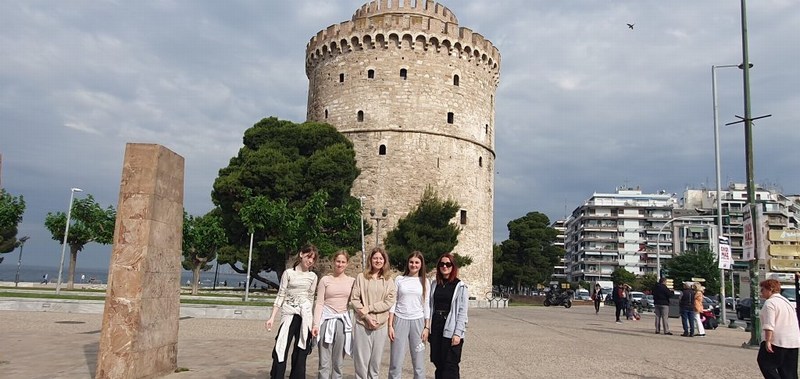
On the way to our final destination, we stopped at the Pella Archaeological Museum, which is located near the site of the ancient Macedonian palace. Mosaics, statuettes, furniture, and clothes took us into the history of Central Macedonia. Upon arrival, we saw an important exhibit – the marble head of Alexander the Great, which is considered his portrait. A very important part of this museum is the floor mosaics from the houses of Dionysus. After visiting the museum, we had a better idea about ancient public life.
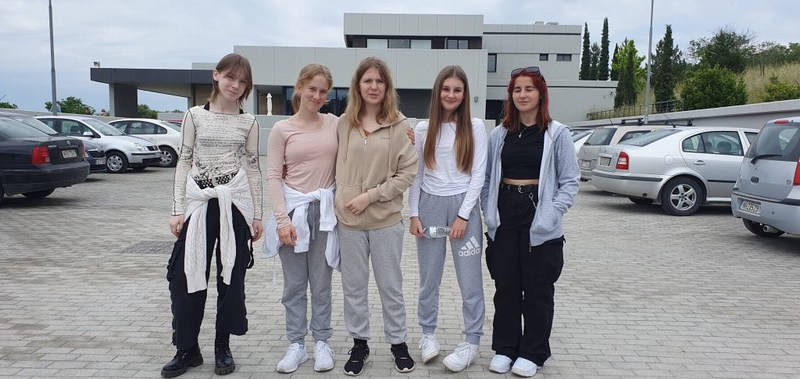
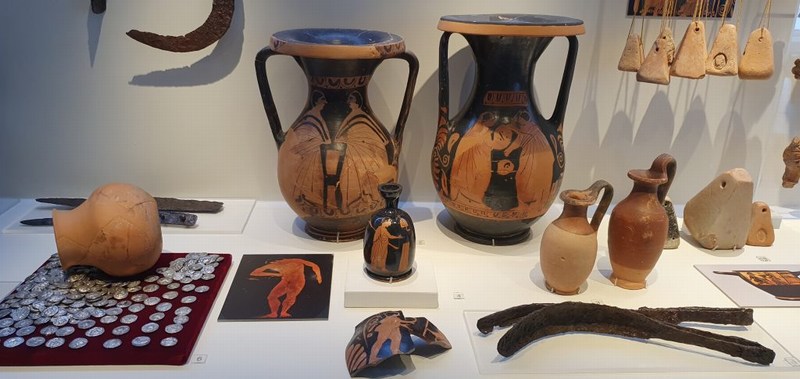
Finally, we arrived in Edessa. The town is known for its waterfalls, which were created after a great earthquake in the 14th century. They are one of the most powerful and largest in the Balkans. The Edessaios River, which has several deltas, flows through the city. People took advantage of the spring water and built several mills. During the mobility, we had the opportunity to visit the mill museum.
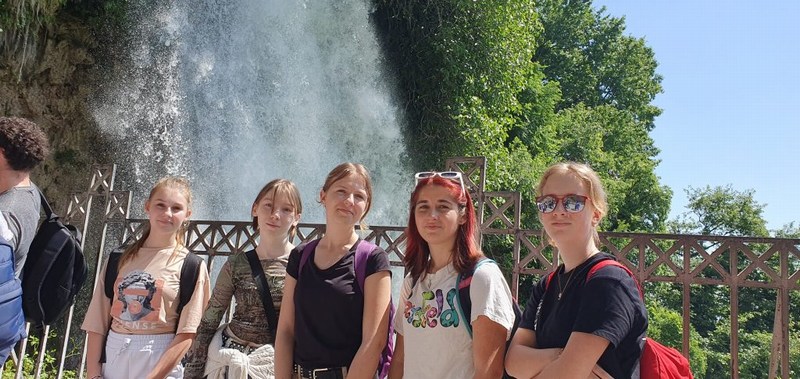
On Tuesday, Greek students welcomed us to school. We were very surprised when we heard the Slovenian national anthem, and then the Greek boys even sang our folk song Marko skače. They had extremely good pronunciation and our girls were thrilled.
Greek students honored each country with their national anthem and folk song.

We also learned about the Greek school system. When children are 4 years old, they must attend kindergarten. We found out that primary school is attended by students aged 6-12. After that, they go to high school, which lasts three years. When they turn 15, their compulsory schooling ends. Pupils can enroll in general secondary school, technical vocational schools or opt for vocational training. After finishing high school, they can choose to study at various universities.
During the mobility, we learned to prepare their simple traditional dishes with feta cheese and vegetables at the cooking workshop, danced traditional dances, and got acquainted with their music. On Thursday, representatives of local folklore groups danced for us.

We were also interested in their fairy tales. The 4th-grade students played the folk tale The Ant and the Cricket for us, which has a deeper message: prepare today so that you will not be hungry tomorrow.
On Wednesday, we were taken to explore one of the most important Greek archaeological museums in Vergina. The tombs of several Macedonian kings were discovered here in 1977, including the tomb of Philip II, the father of King Alexander the Great, and the tomb of his son, Alexander IV. The museum was built over the tombs to keep them in their original position.
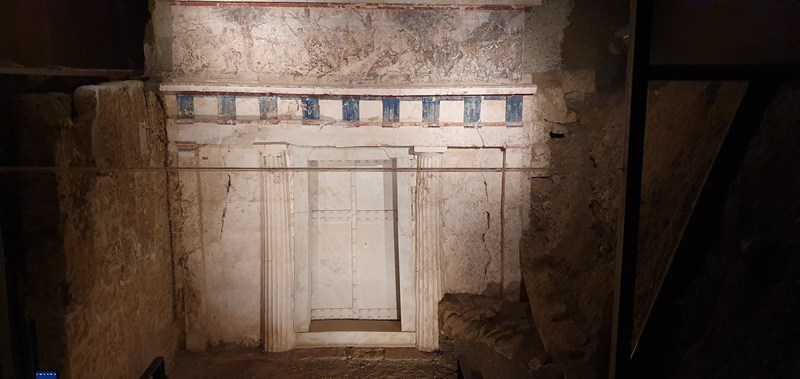
When we think of Greece, the first association for many people is the sea. Although the Edessa is not placed on the coast, our hosts took us once to the Paralia Katerinis, where we swam in the Aegean Sea. We also had a chance to swim in the thermal springs in Pozar.


During each mobility, we explored the cuisine of the individual host country. The Greeks surprised us because they prepare different types of salads as an appetizer.

The most famous of them is the Greek salad with feta cheese and tzatziki (a dish with squeezed cucumber, Greek yogurt, and garlic). Of course, they don’t know pumpkin oil, which is typical for our part of Slovenia, instead, they season all salads with olive oil and balsamic vinegar. Olive oil is also the basis for their extremely sweet desserts. During our mobility, the parents of the Greek students surprised us by preparing Greek dishes.
On the last working day of our mobility, we drove to Meteora, which is located near the town of Kalabaka and is under UNESCO protection. On the smooth sandstone rocks, for which scientists are still not entirely sure how they were formed, reign the monasteries that were built in the 14th century for protection against Turkish invasions. Because of their location, they were safe from attacks, as monks and nuns could only enter them via a rope and a basket, which they dragged to the monastery. We visited two of the six monasteries that are preserved today. Monks live in one, and nuns in the other. We had to dress appropriately to enter. Men had to wear long pants and sleeves, and women had to wear ankle-length skirts and long sleeves. Skirts were prepared at the entrance to the monastery for the “improperly” dressed guests.
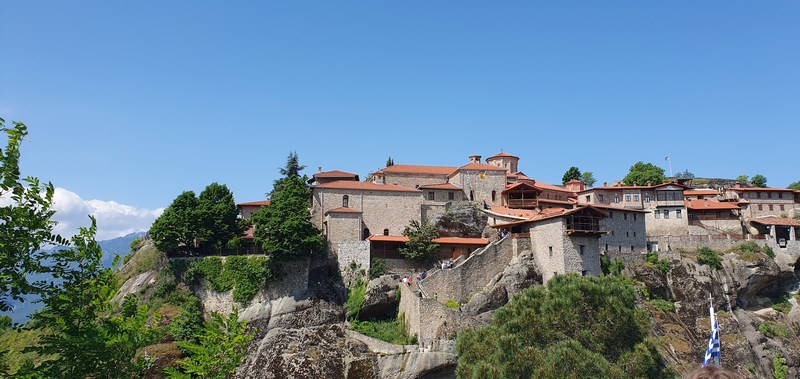
Unfortunately, the days passed too quickly and our mobility came to an end on Saturday, May 29, 2023. Since it was the last mobility in our project, we said goodbye to our hosts and other participating teachers and students. This was even more difficult for us because we become good friends.
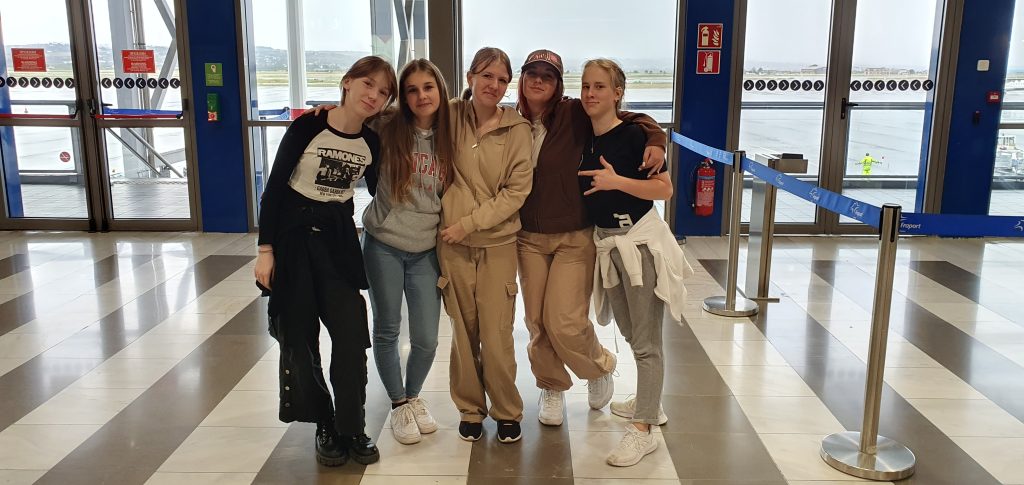
Our project lasted from September 2020 and the students grew with it for three years. It offered them many new experiences and lifelong knowledge. Students learned how to use a computer and some new applications that can make their work easier. They researched local history, dances, music, and architecture, as well as legends, fairy tales, and, last but not least, cuisine. They shared their knowledge with students from foreign countries and thus improved their knowledge of the English language. In this way, we wanted to encourage the social inclusion of our students, promote diversity and equality, support the disadvantaged, and increase the social and educational value of European cultural heritage. Teachers were able to share examples of good practices with each other and incorporate their new knowledge into their learning activities.
Although the project was carried out during the challenging time of the corona virus, we are happy that we were able to realize all the goals we set.
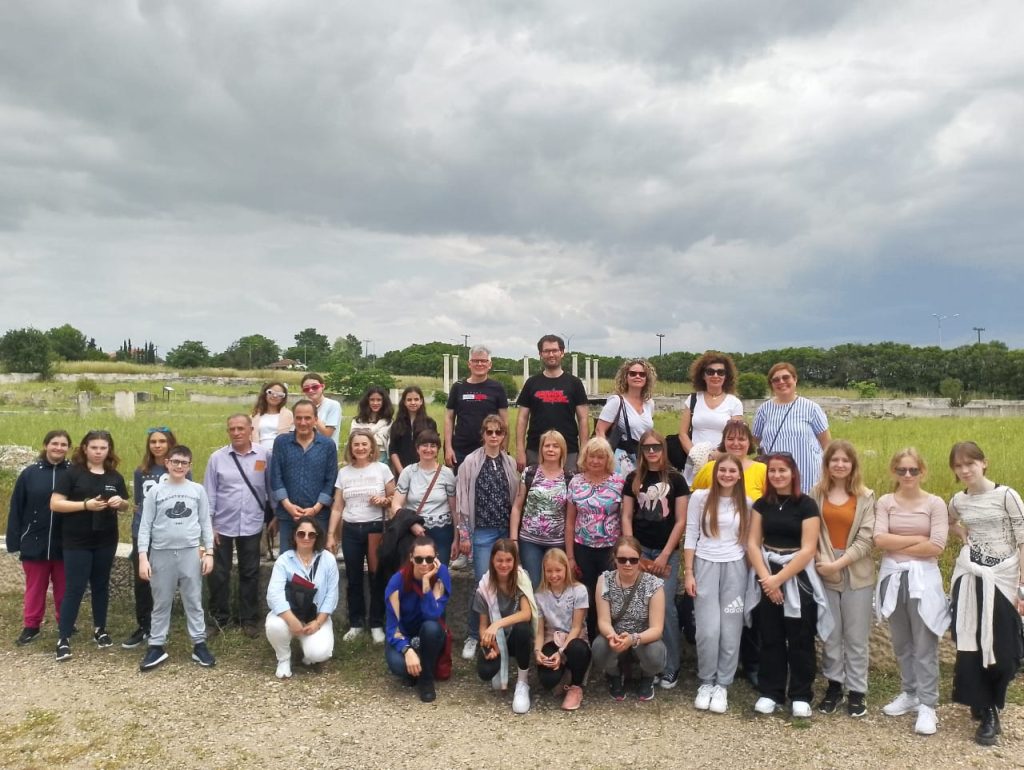
Many thanks to the Greek team for the wonderful mobility and to all our friends for the unforgettable moments of laughter and joy.
Dissemination of the project to teachers from Primary Schools
On April 12, we organized a presentation of our project to interested teachers from various schools at Rače Elementary School. Teachers from Primary School 1 Murska Sobota and Primary School Šmartno pod Šmarno gora responded to our invitation. I presented the goals and achievements of the project, and how it affected the teaching practice at our school.
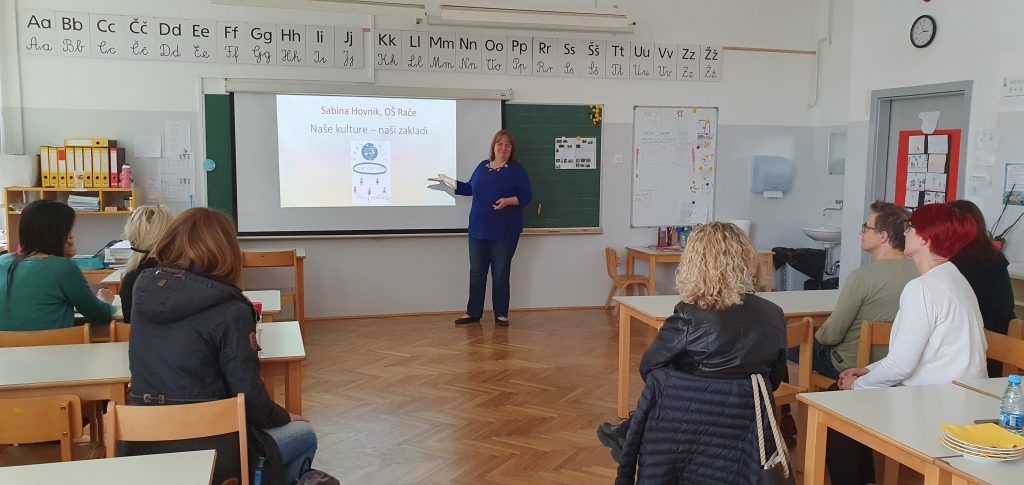
A multi-lingual music album
During the implementation of our project, we try to involve as many students as possible through various school activities. So we decided to invite the school children’s choir to perform the task of a multilingual music album.
First, students had to decide on a Slovenian folk song to sing. Then we asked individual students who speak English perfectly to translate the song into English.
The young singers spent quite some time preparing for the recording of the song under the direction of choir director Petra Efremov.
Our youngest students, first-graders, who are aged only 6-7 years, illustrated each stanza during their art lessons.
We prepared a video with the lyrics of the Slovenian folk song “Petelinček je na goro šel” and its English translation (A rooster on a mountain went).
Here is the link to the video:
The Slovenian team is in charge of preparing a music album, on which all the songs prepared by individual countries will be collected.
Traditional dance from Slovenia – RAŠPLA
One of the tasks of the Erasmus+ project “Our Cultures – Our Treasures” was to teach students from other countries to dance a folk dance. Our young folklorists chose the dance rašpla and, in cooperation with individual students from the 2nd, 3rd, 5th, 6th and 7th grades, prepared English instructions for this dance.
The students who took part in the mobility to Portugal have already presented the dance and taught the participating students from foreign countries how to dance it. At that time we came to an interesting discovery. Our friends from Portugal informed us that they also know a very similar dance, which even has a similar name.
With the video, we wanted to show that we care about our culture, that we respect and appreciate it. The school folklorists, however, are trying to keep the tradition alive through dancing and singing.
You can watch the video at the link below:
Cook my food
Due to the Corona situation, we asked the National Agency of Slovenia – CMEPIUS – for a one-year extension of the project. More time is an opportunity for additional tasks.
During the mobility to Slovenia in October 2021, teachers decided on new tasks and one of them was named “Cook my food”.
Each school was responsible for its part of the lunch – Slovenia had to prepare a salad and a dessert. We recorded video instructions on how to prepare these two dishes. The activity was carried out by students of the 6th grade during the home economics class.
You can see the video here:
Although the preparation of the dessert was not easy to do, we were not afraid of the challenge. We invited our school chef to participate. He was glad about the invitation and he taught the students some cooking tricks. The fact that the chef also participates in cooking classes filled the students with enthusiasm.
We recorded video instructions. You can see them here:
Art Stop
This time’s challenge sent us to the field of fine arts. In September, a group of students attending the Art Design course saw an exhibition of artworks and creations by a contemporary artist.
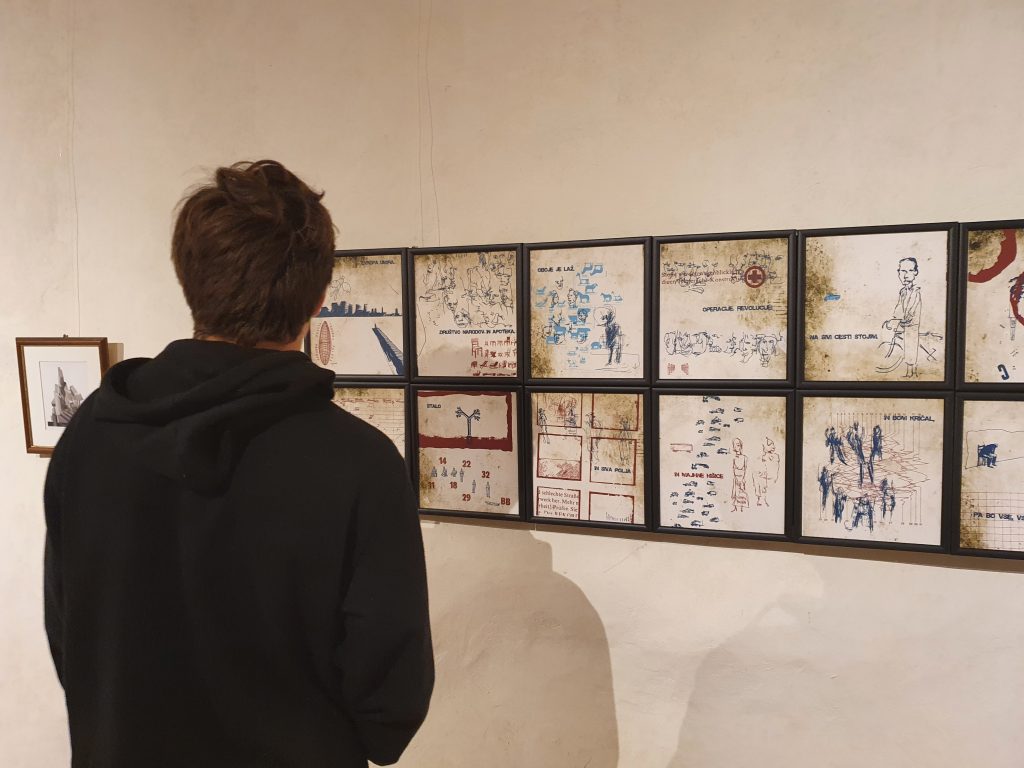
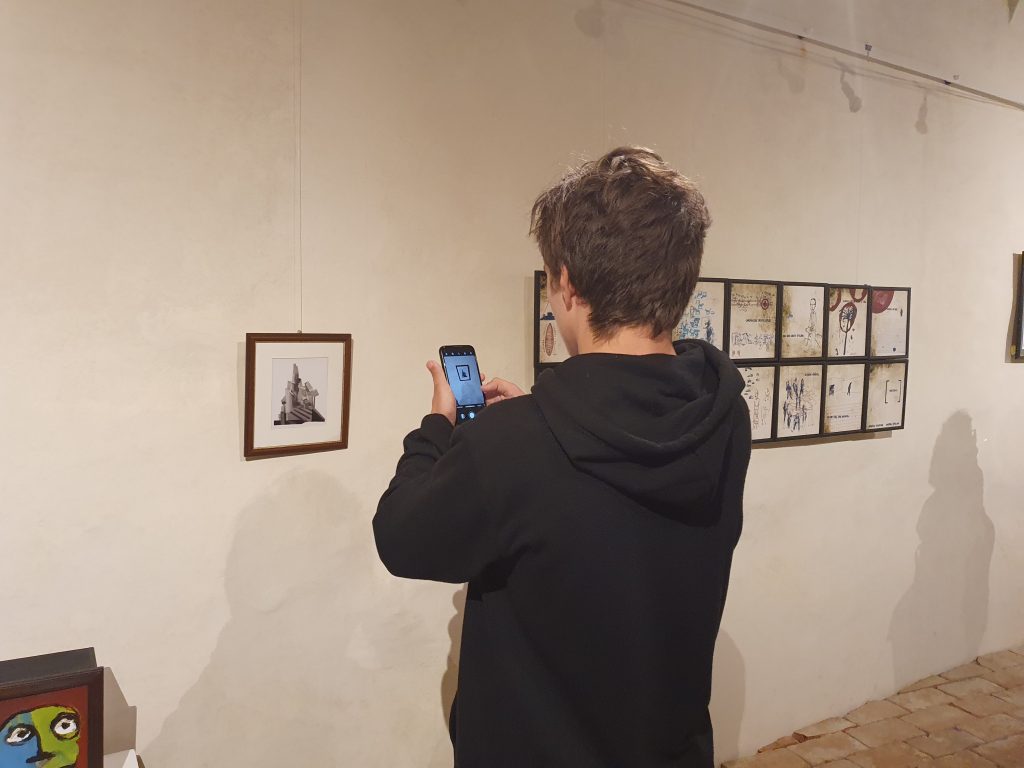
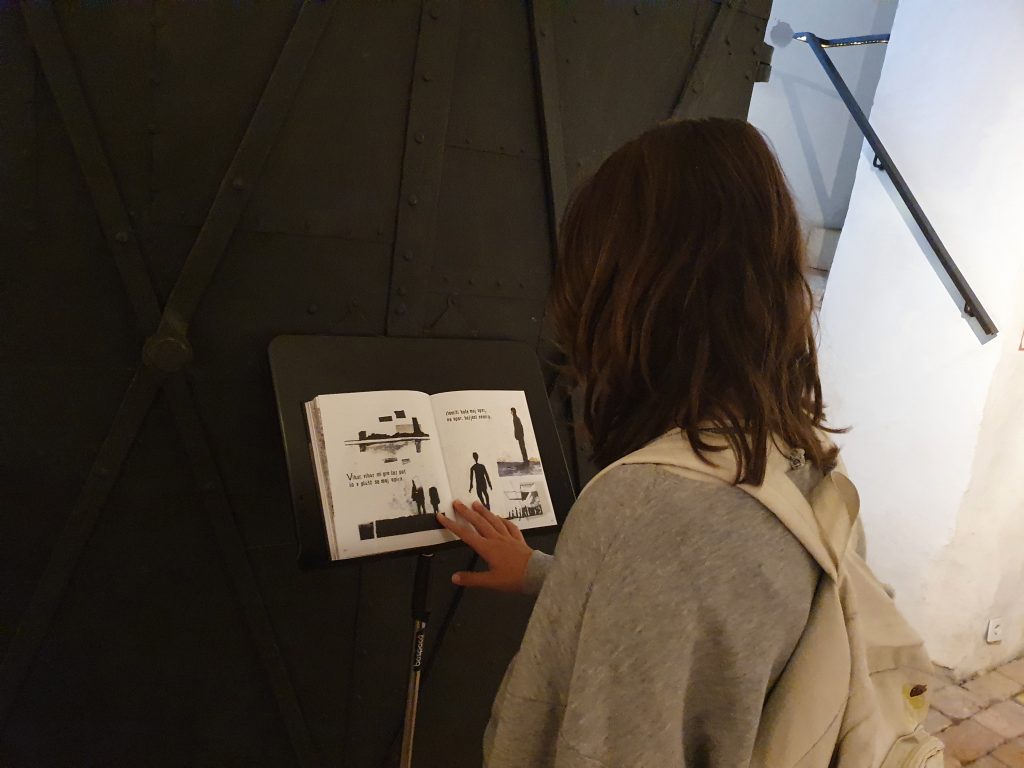
The students had the opportunity to meet the artist Andrej Štular and, under his guidance, see an exhibition of his works published in the book Srečko Kosovel & Andrej Štular: Sharp rhythm. During the exhibition, they looked for his works that they liked and would like to recreate later.

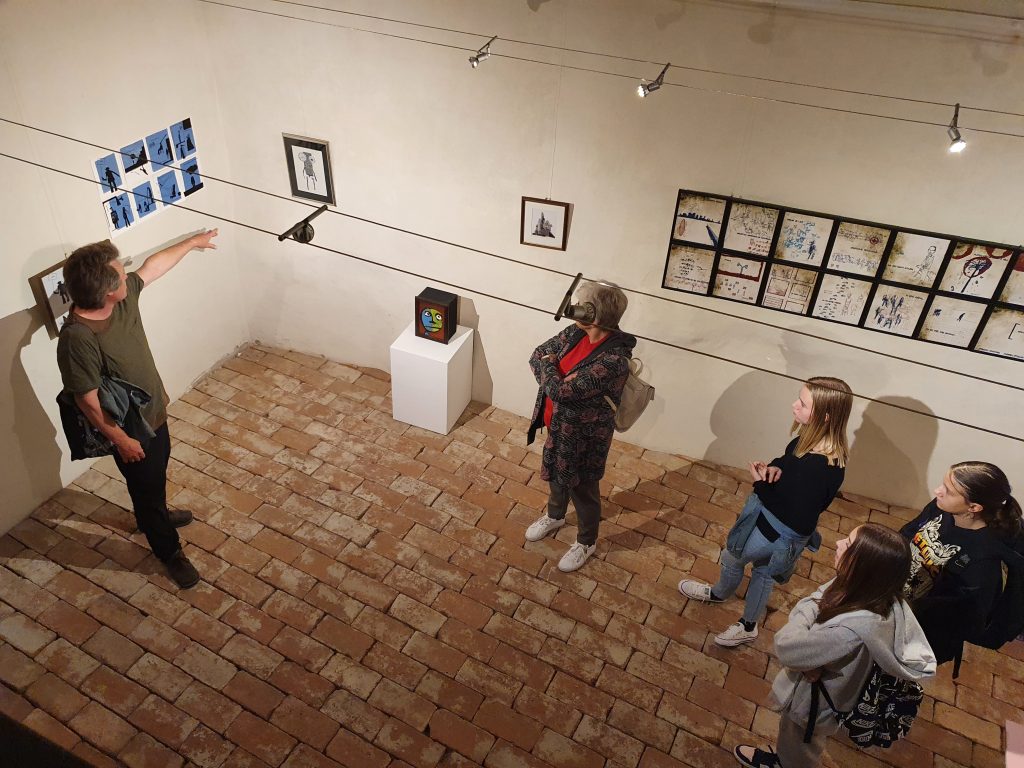
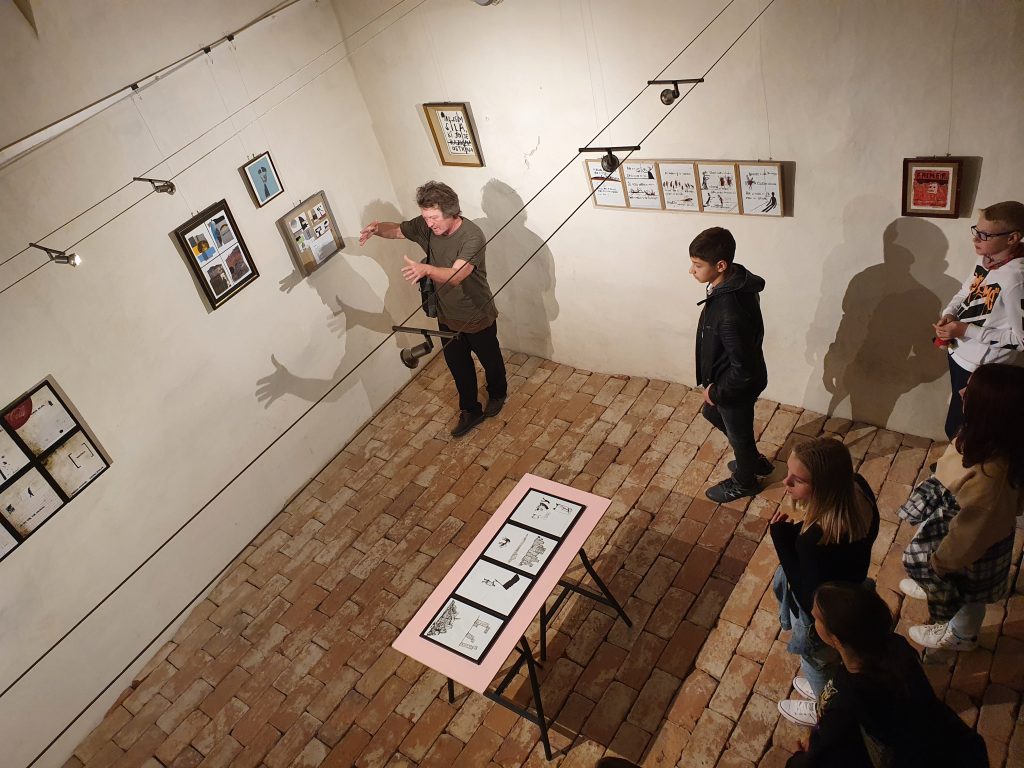
We continued to explore artworks at school as well. Students of the “Art design” and “RAP eTwinning” courses visited the websites of the two largest art galleries in Slovenia: the National Gallery in Ljubljana and the Art Gallery in Maribor.
By searching the websites, they selected some artworks by our very important artists:
– Ivana Kobilca (The Coffee Drinker and The Girl in the Red Jacket)
– Ivan Kos (Girl with an Orange)
– Anton Nowak (Portrait of a Girl)
– Andrej Štular (Work from the book Sharp rhythms)
The students had to recreate the works of their choice in order to get as close as possible to the original. This activity included a lot of laughter and fun. Here are some of the most interesting pieces:

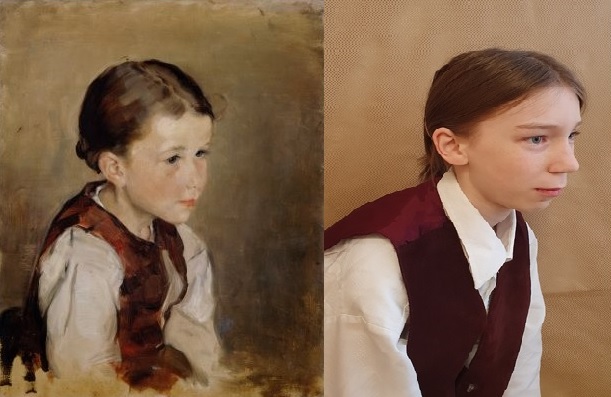
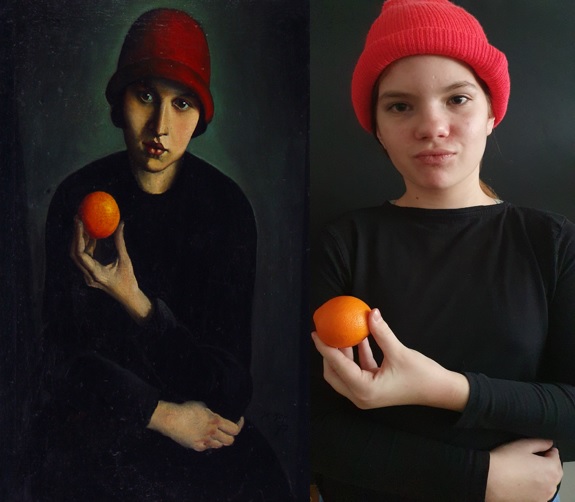
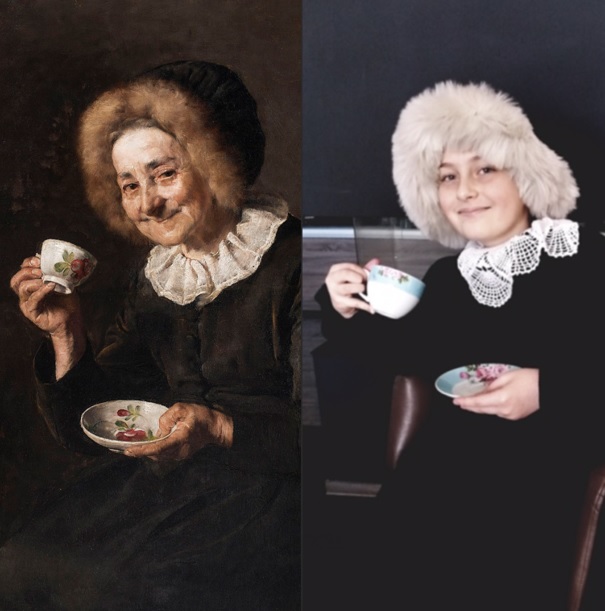

In the end, the Slovenian team also prepared a virtual exhibition of photos of the recreation of works of art from all the schools participating in our Erasmus+ project.
To see the exhibition, click on the link bellow:
EXHIBITION OF OUR LOCAL ARCHITECTURAL SYMBOLS
After the last mobility to Spain, a new task awaited the students: researching architectural landmarks in Slovenia.
We divided the task into three parts: the older students researched the architecture of the capital city, while the younger students explored the architecture of Rače. Together, they also explored the architecture of Maribor, the second-largest Slovenian city and the capital of the Styria region.

On the 21st of November in 2022, older students visited Ljubljana, where they toured the buildings in our capital under the expert guidance organized by TIC Ljubljana. They learned about the history of Ljubljana, its legends, and its architectural appearance.
The tour started at the Union Hotel. In the video, the two students explain in English why the hotel was important at that time.
The students walked along the Triple bridge, which is on the UNESCO cultural heritage list. The guide explained that the triple bridge in its current form is the work of the architect Plečnik.
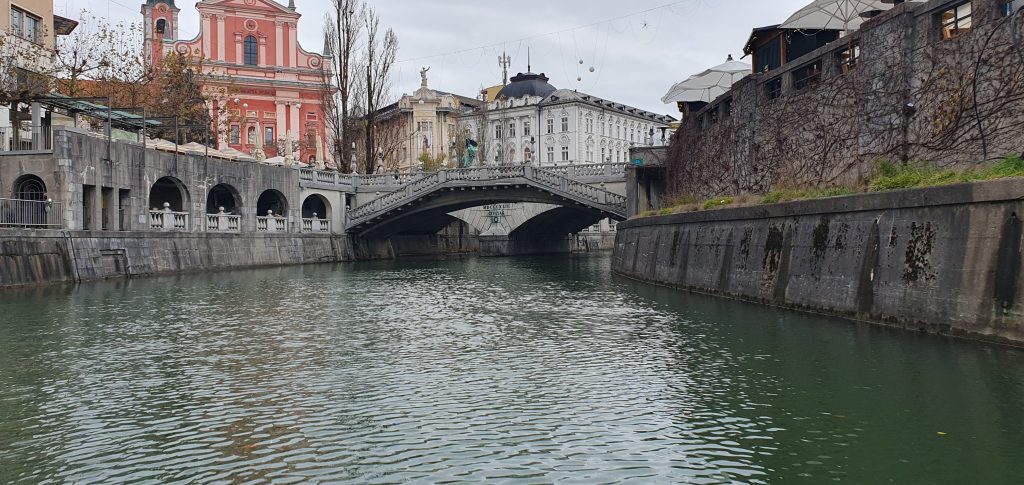
We have heard a lot about the architect, who had a significant influence on Ljubljana’s architecture. We saw quite a few buildings that were created under his leadership and planning. The National University Library was the most interesting for the students. They made a short video about its architecture.
Churches are an important part of every city. In the very center of Ljubljana, we visited two: the Church of the Annunciation on Prešeren square and the cathedral – St. Nicholas.
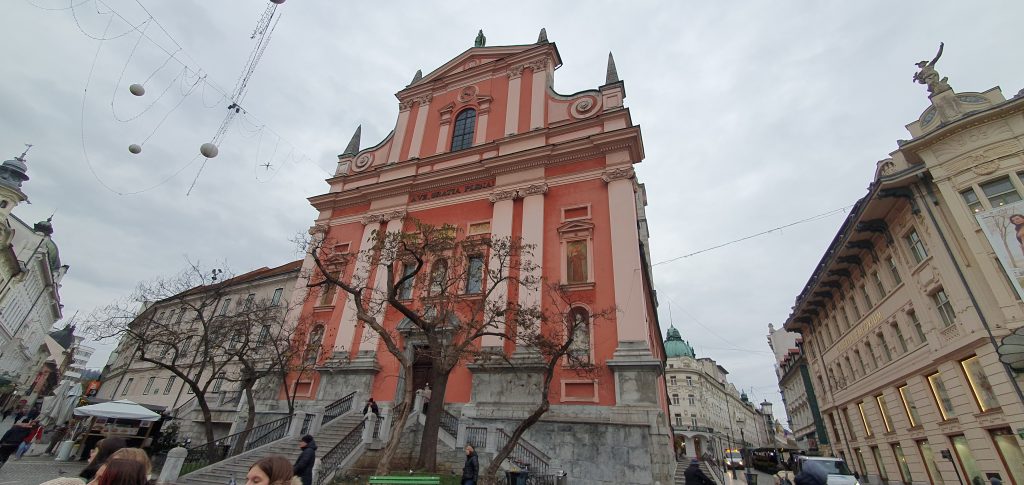
Near the cathedral is the Town Hall or Rotovž in which the Municipality of Ljubljana is located. In front of the house is Robb’s well. It was supposed to represent the three rivers of Krajnska: Ljubljanica, Krka, and Sava.
After visiting the Town Hall, we went on a boat ride on the Ljubljanica river. We noticed that there are quite a few bridges in the city itself. Very interesting was the new Butcher’s bridge, or Ljubljana’s Bridge of love. The lovers put locks on it and throw the keys into the river. That way, their love should last forever.

The second part of the assignment was completed in Maribor. It was done by almost all the pupils who attend eTwinning. It was quite a colorful group of students aged from 9 – 13 years. Since the Maribor Art Gallery recently opened an exhibition of the architectural work of the architect Saša Dev, who greatly influenced the development of the city’s architecture, we decided to visit it.

The curator introduced us to the profession of an architect, and to the life of Saša Dev. We have seen his building plans.
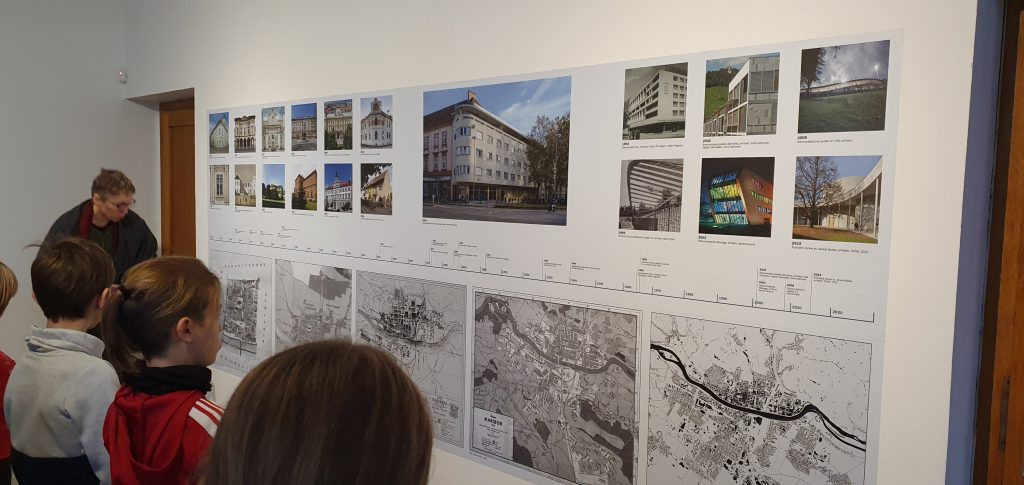
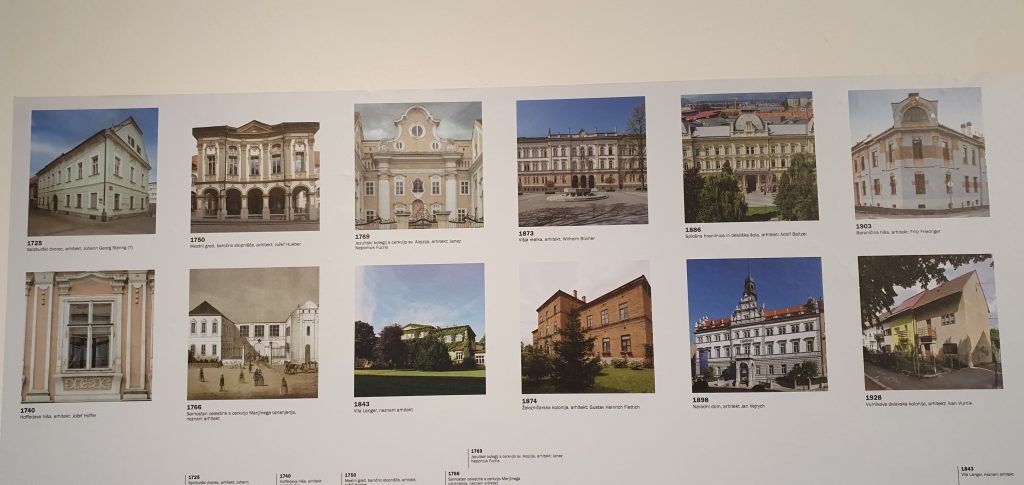


After the exhibition, we went around the city with the curator. First, we stopped at the former bank, which was the first building in Maribor made of concrete and steel.
Architect Saša Dev also designed Hutter’s block of flats and the medical center. Near the Hutter block is the city hall, a beautiful building with a neo-baroque facade.
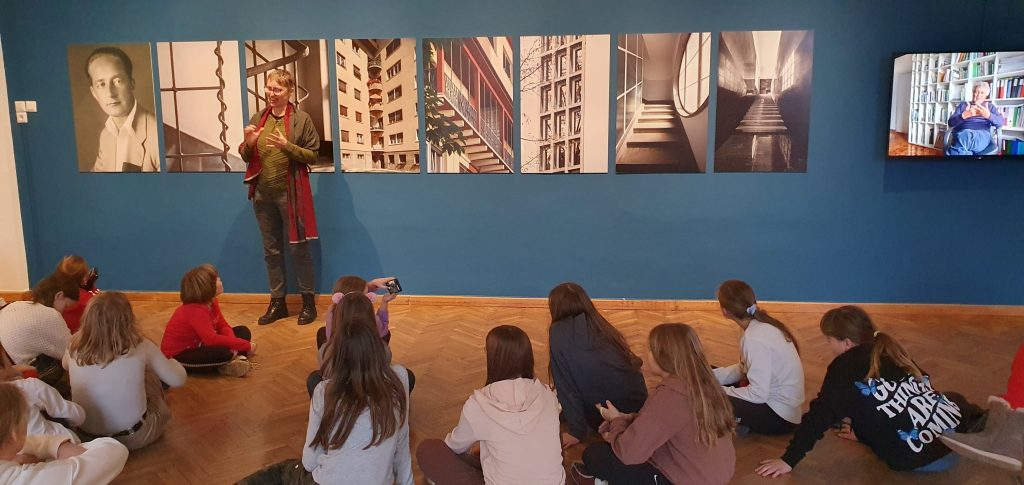
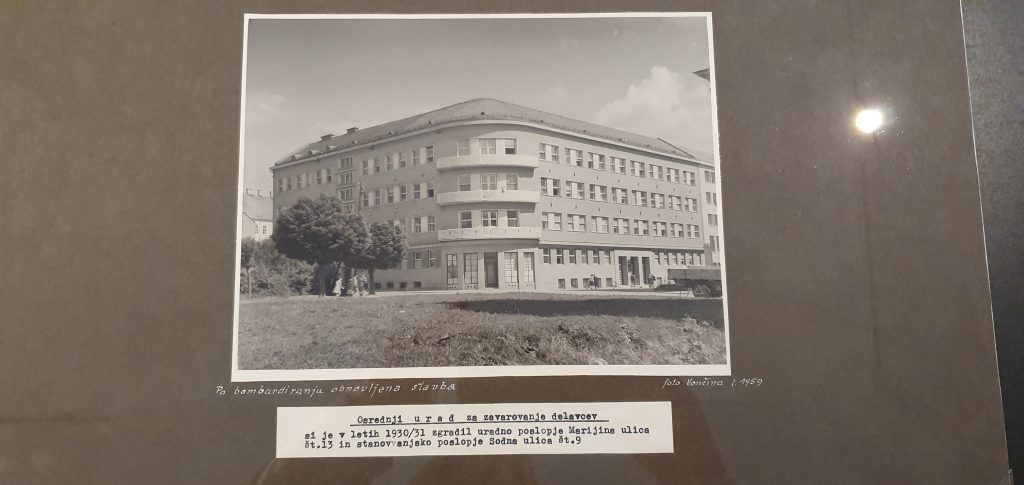

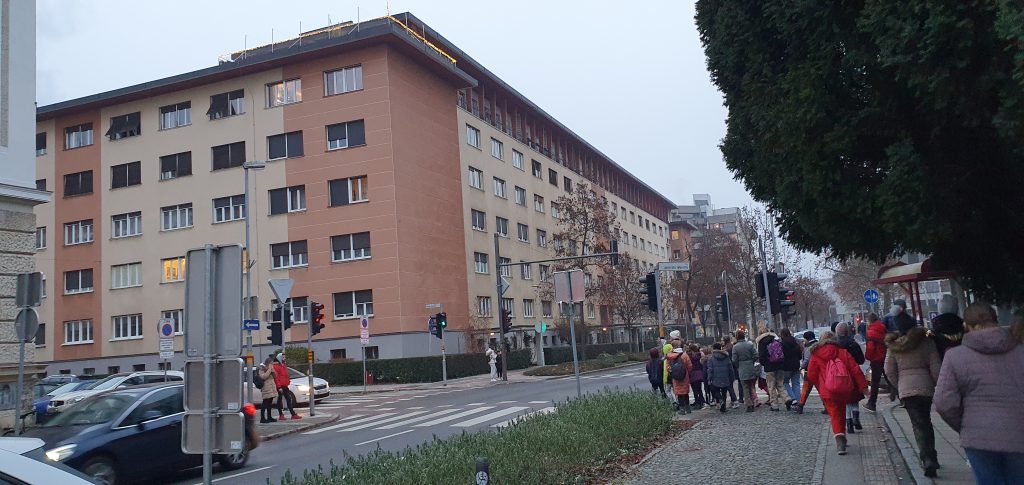
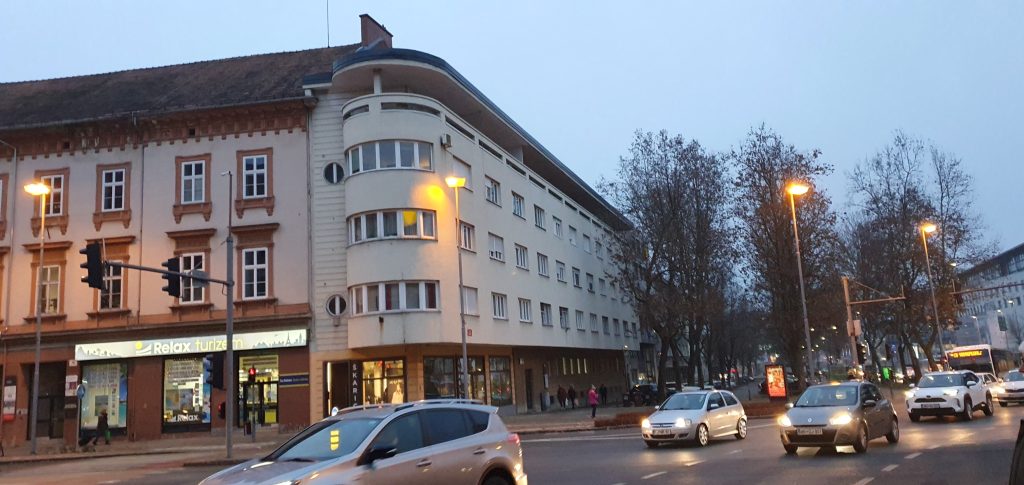
The Maribor castle is one of the most remarkable architectonic monuments of the city. It boasts with several constructional and style periods and was built by Emperor Friderik III between the years 1478 and 1483 for the purpose of fortifying the northeastern part of the town wall.
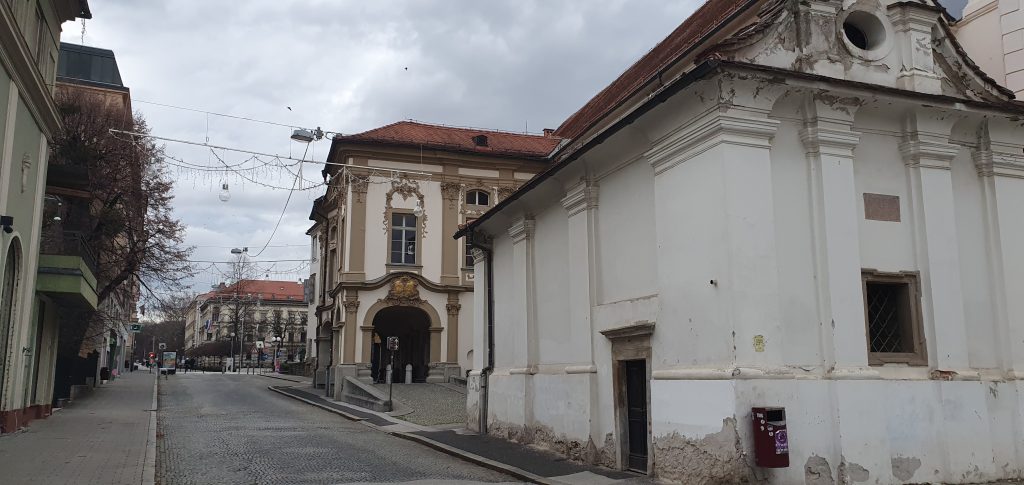
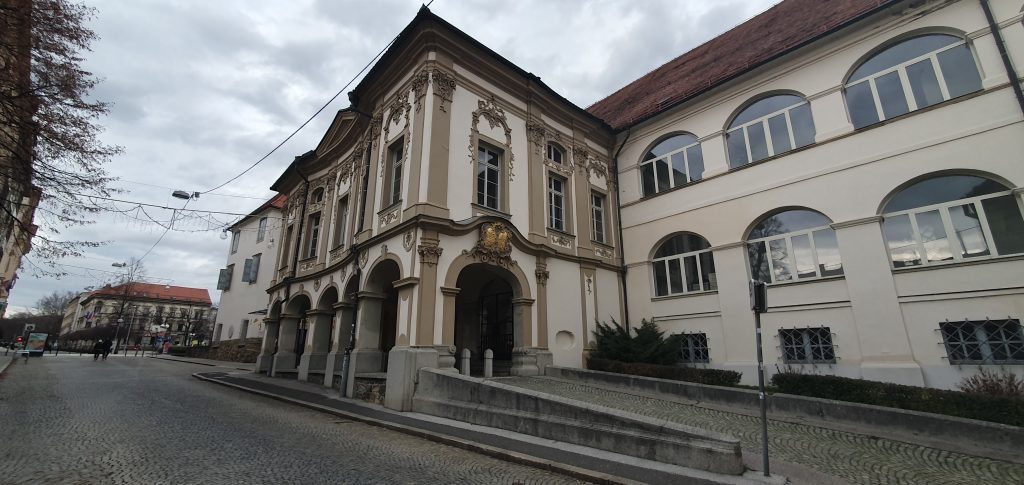

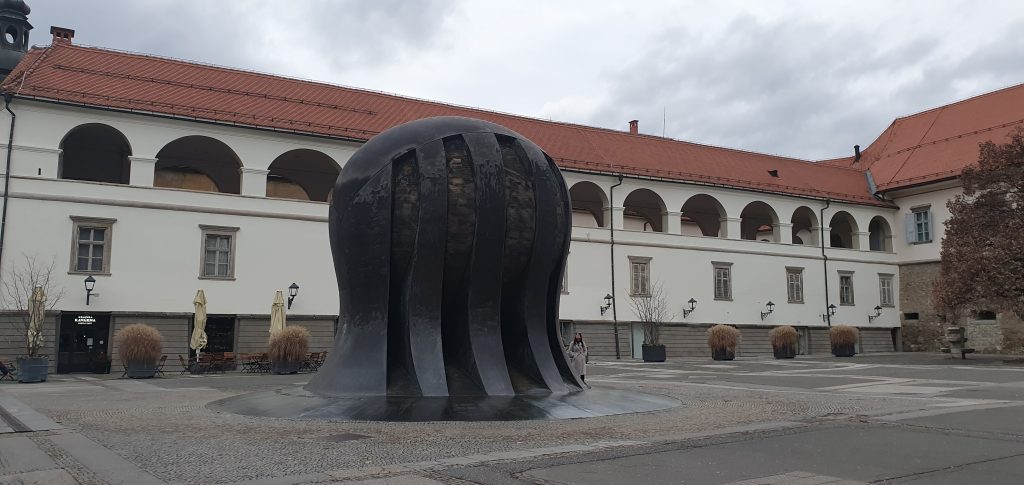

The Franciscan church and its monastery is standing next to important streets in the center of town. This “reddish” church is very interesting with its two towers and exterior appearance. We had the opportunity to see the Cathedral Church, which is also remarkable but looks completely different from the Franciscan church.
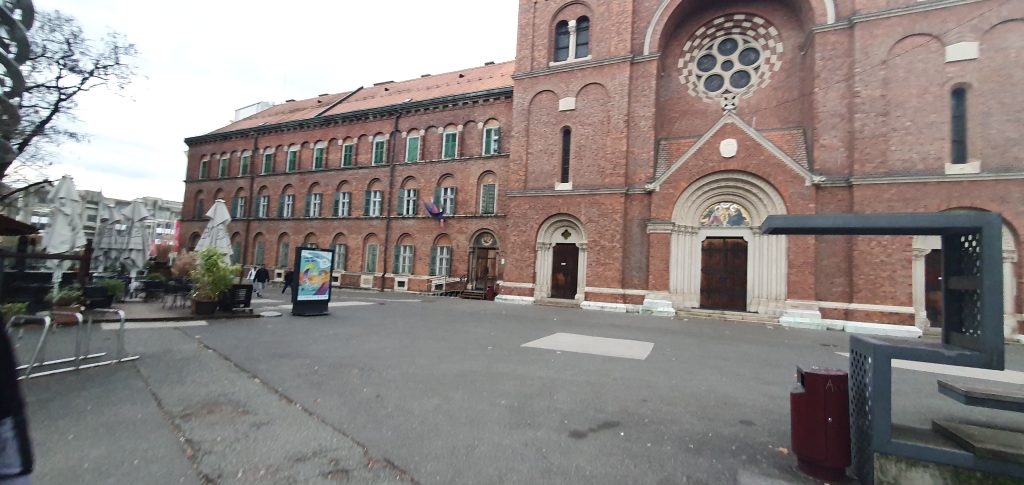
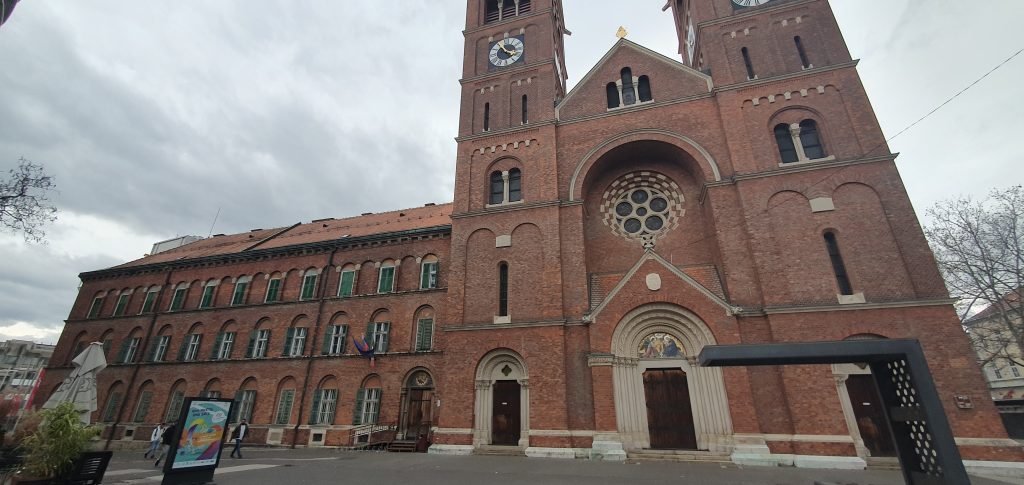
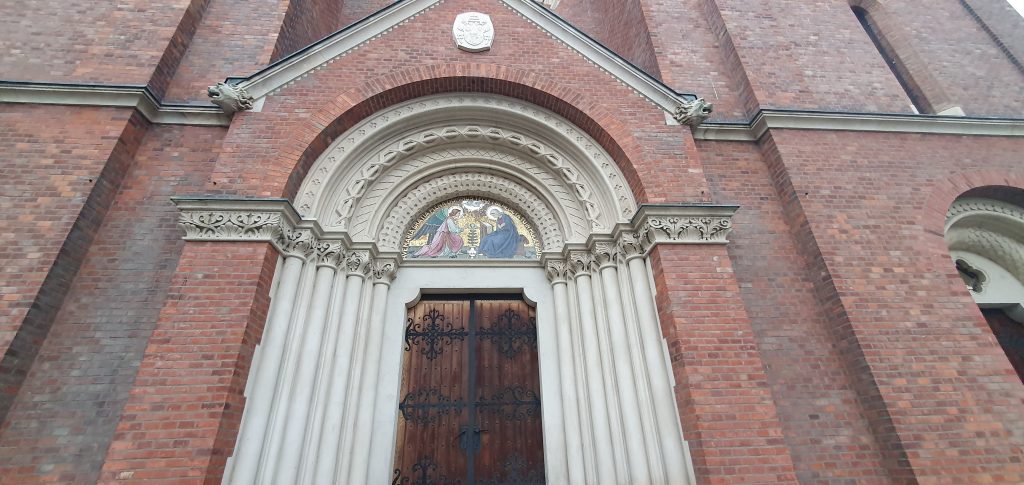
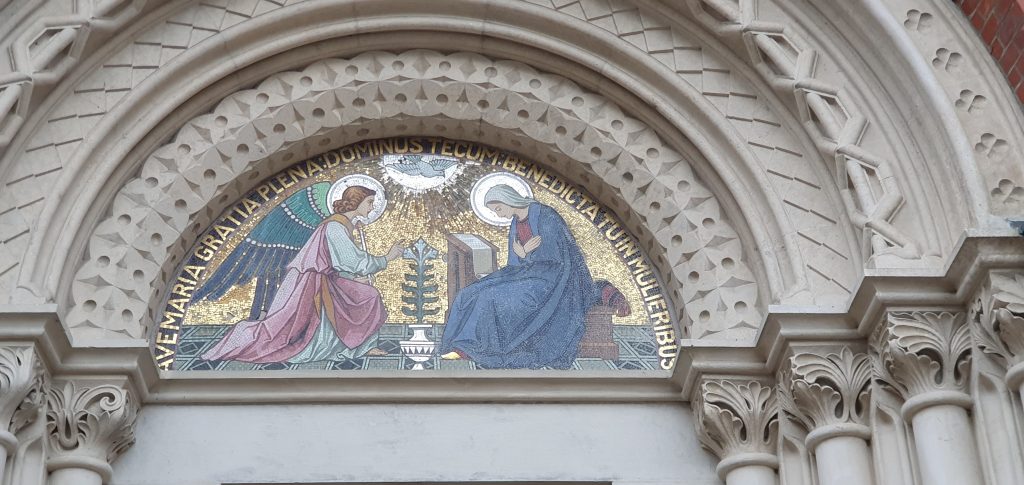
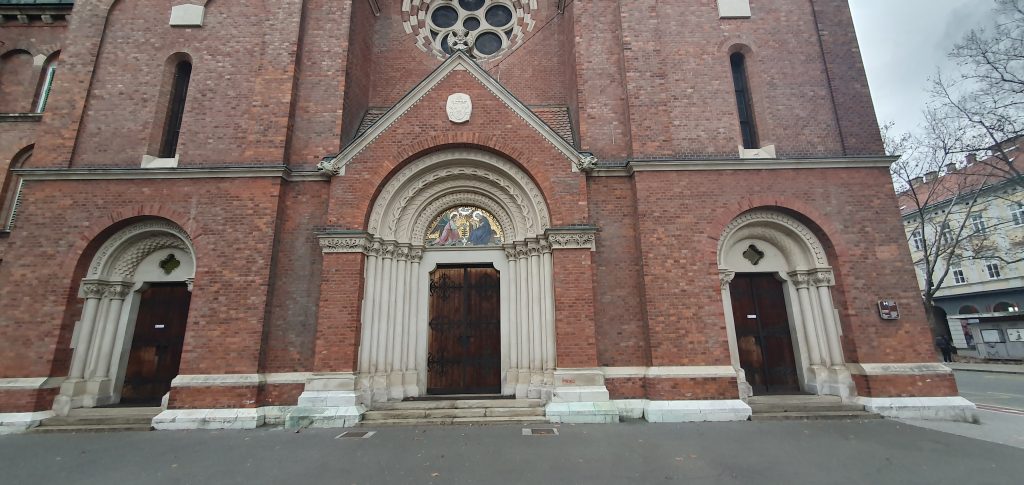
On the Main Square, we went to the Plague sign – a monument commemorating the plague. The plague broke out in Maribor for the first time in the 17th century. Approximately one-third of the inhabitants died and the Plague Column was built in 1681 when this terrible disease was over.

Bridges are also an important part of Maribor architecture. There are six of them across the Drava River, and the seventh is currently being built.
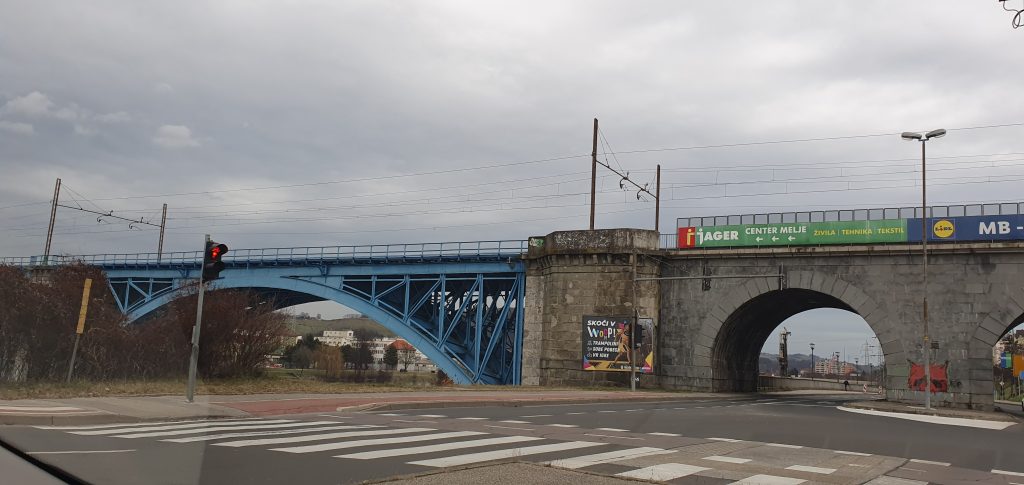
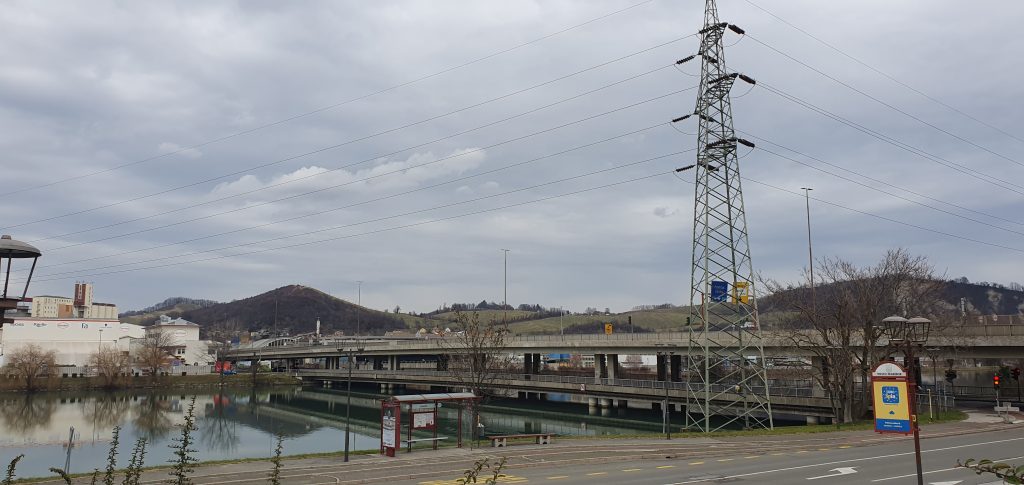

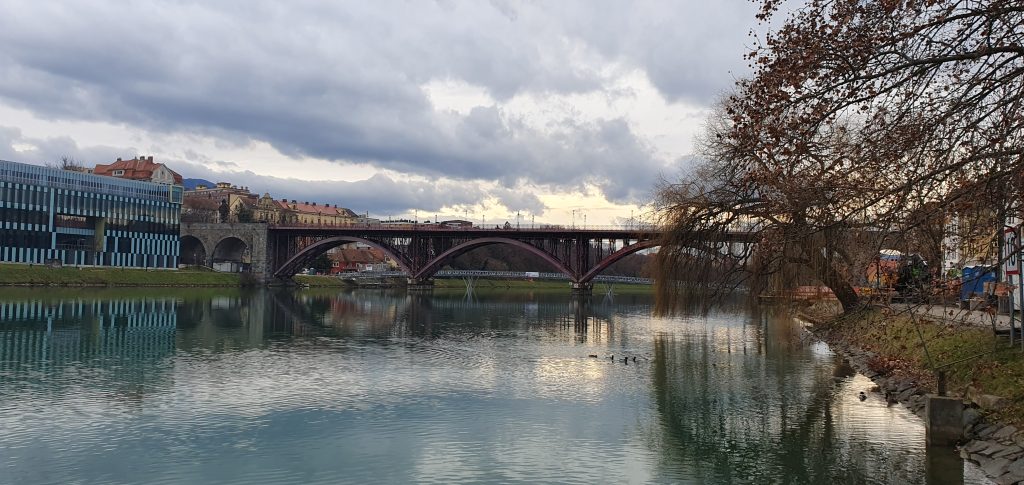


Shortly after the new year, the younger students of the eTwinning group went to see the architecture of our town Rače.
In Rače there is a beautiful castle, which is the pride of our place. It has two round turrets and is particularly interesting because of its key shape. Then we went to the church. The church is relatively young, as the original building was built only in 1967.

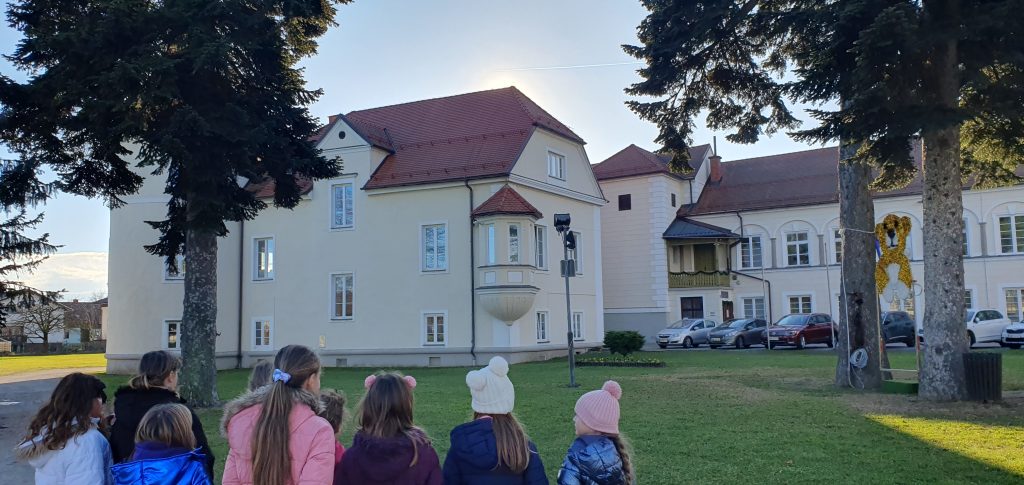
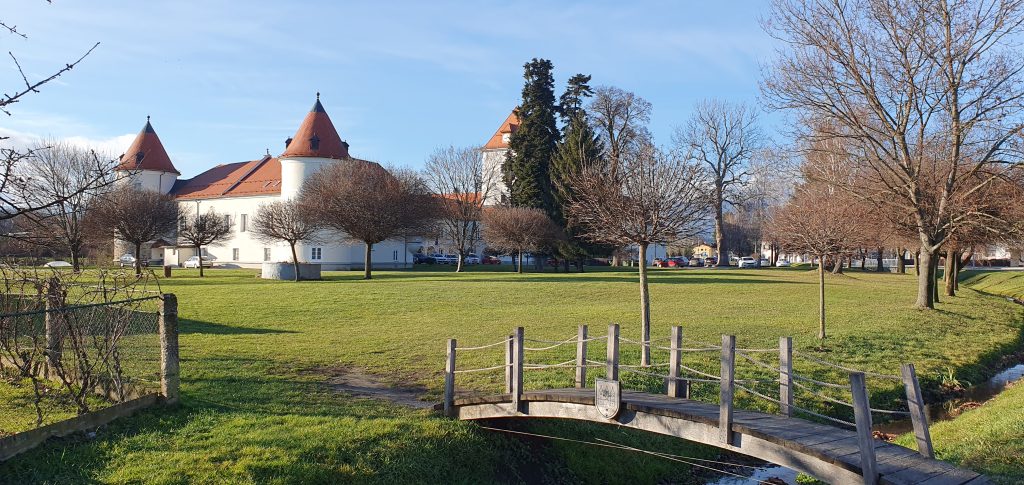

After visiting those three cities students tried to edit a joint document in order to prepare a PPT on Slovenian architecture. They came to the conclusion that the architecture of individual places differs from each other. On the other hand, they could still find many similarities according to the period in which each building was built.
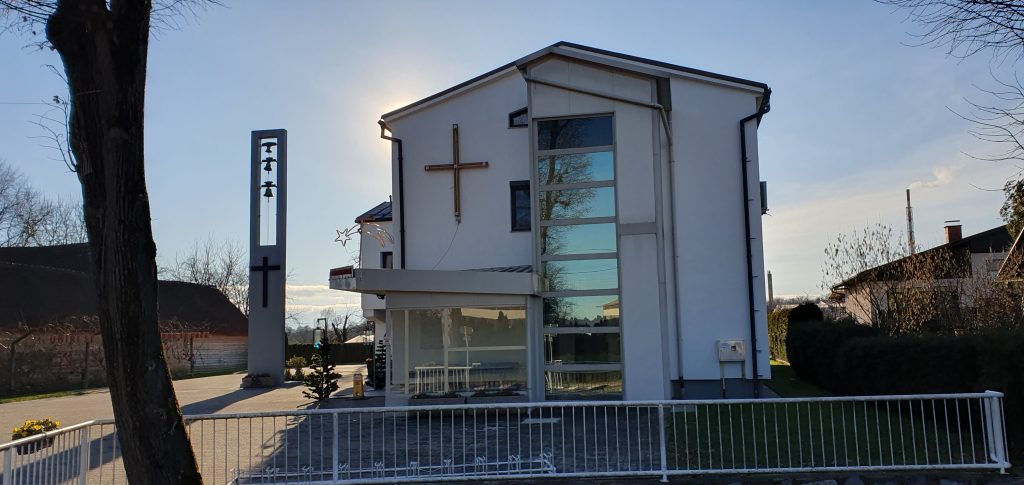


At the school, we prepared an exhibition of all the architectural symbols that we received from all the Erasmus+ partner’ schools.
Dissemination of the project to the teaching staff at the Gustav Šilih Center in Maribor
In May 2022 teacher Saša Kovačec presented the Erasmus+ project “Our Cultures – Our Treasures” and mobility to Portugal to teaching staff at the Gustav Šilih Center in Maribor, which is the second largest specialized organization for children with special needs in Slovenia.
She presented the conceptual design of the project and the participating countries. She mentioned the interesting features of the Portugal school system, which she had the opportunity to discover during her mobility. The difference in obtaining the teacher title for additional professional help in Portugal and Slovenia was especially emphasized.
The teaching staff was interested in how the school system is divided and how children with special needs are taken care of in this country. Of course, she also mentioned the wonderful natural beauties we could see, and the cultural differences between the two countries, and praised the hospitality of our hosts. She concluded that more of the teaching staff should participate in such projects, where participating teachers and students get to know other cultures and ways of working and learn from their examples of good practices, and at the same time pass on our rich knowledge.
